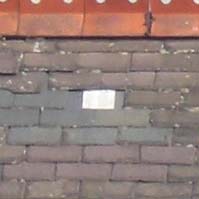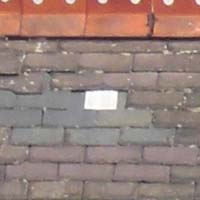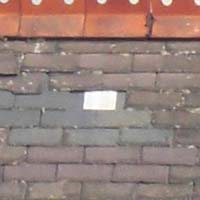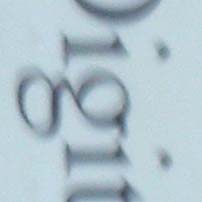Casio EX-Z200 Review
Review Date: April 14th 2008
Author: Mark Goldstein
Leave a comment about this Review
|
Image Quality
All of the sample images in this Review were captured using the 10M Fine JPEG image size option producing a file that is around 5Mb in size.
Noise
The Casio EX-Z200 has 6 ISO settings which you can select in the majority of shooting modes. There is virtually no discernible noise at the slowest settings of ISO 50 and 100, but smoothing and slight loss of detail is apparent at ISO 200. At ISO 400 image quality has deterioated quite a lot, and ISO 800 suffers from even more noise. The fastest setting of ISO 1600 should only be used as a last resort, if at all. Here are some 100% crops which show the noise levels for each ISO setting.
ISO 50 (100% Crop) |
ISO 100 (100% Crop) |
 |
 |
ISO 200 (100% Crop) |
ISO 400 (100% Crop) |
 |
 |
ISO 800 (100% Crop) |
ISO 1600 (100% Crop) |
 |
 |
Sharpening
Here are two 100% crops which have been Saved as Web - Quality 50 in Photoshop. The right-hand image has had some sharpening applied in Photoshop. The out-of-the camera images at the default setting are a little bit soft and benefit from some further sharpening in a program like Adobe Photoshop. Alternatively you can change the in-camera sharpening level if you don't like the default results.
Original
(100% Crop) |
Sharpened (100% Crop) |
 |
 |
 |
 |
File Quality
The Casio EX-Z200 has 3 different image quality settings available, with Fine being the highest quality JPEG option. Here are some 100% crops which show the quality of the various options, with the file size shown in brackets.
10M
Fine (5.36Mb) (100% Crop) |
10M
Normal (2.87Mb) (100% Crop) |
 |
 |
10M
Economy (1.95Mb) (100% Crop) |
|
 |
Chromatic Aberrations
The Casio EX-Z200 dealt fairly well with chromatic aberrations during the review, with some obvious but limited purple fringing effects present around the edges of objects in high-contrast situations. Here are some 100% crops which show the typical chromatic aberrations that you can expect:
Chromatic
Aberrations (100% Crop) |
Chromatic
Aberrations (100% Crop) |
 |
 |
Macro
The Casio EX-Z200 offers a Flower scene mode that allows you to focus on a subject that is 15cms away from the camera. The first image shows how close you can get to the subject in Macro mode (in this case a compact flash card). The second image is a 100% crop.
Macro Shot |
Macro Shot (100% Crop) |
 |
 |
Flash
The flash settings on the Casio EX-Z200 are Auto, Flash Off, Flash On, Soft Flash, and Red Eye Reduction. These shots of a white coloured wall were taken at a distance of 1.5m.
Flash Off - Wide Angle (28mm) |
Auto Flash - Wide Angle (28mm) |
 |
 |
Flash Off - Telephoto (112mm) |
Auto Flash - Telephoto (112mm) |
 |
 |
And here are some portrait shots. As you can see, neither the Auto and Red-Eye Reduction options caused any amount of red-eye.
Auto |
Auto (100% Crop) |
 |
 |
Red-Eye Reduction |
Red-Eye Reduction (100% Crop) |
 |
 |
Night Shot
The Casio EX-Z200 maximum shutter speed is 4 seconds in the Night scene mode, which is not very news if you're interested in night photography. The shot below was taken using a shutter speed of 4 seconds, aperture of f/2.6 at ISO 50. I've included a 100% crop of the image to show what the quality is like.
Night Shot |
Night Shot (100% Crop) |
 |
 |
Anti Shake
The Casio EX-Z200 has a CCD-shift anti-shake mechanism, which allows you to take sharp photos at slower shutter speeds than other digital cameras. To test this, I took 2 handheld shots of the same subject with the ISO speed set to 100. The first shot was taken with anti shake turned off, the second with it turned on. Here are some 100% crops of the images to show the results. As you can see, with anti shake turned on, the images are a lot sharper than with anti shake turned off. This feature really does seem to make a difference and could mean capturing a successful, sharp shot or missing the opportunity altogether.
| Shutter Speed / Focal Length | Anti Shake Off (100% crop) | Anti Shake On (100% crop) |
| 1/8th / 112mm |  |
 |
| 0.5 / 112mm |  |
 |
Overall Image Quality
The Casio EX-Z200 produced images of below average quality during the review period. The 10 megapixel images were soft straight out of the camera at the default sharpening setting and ideally require some further sharpening in an application like Adobe Photoshop, or you can increase the in-camera sharpening level. The Casio EX-Z200 handled chromatic aberrations fairly well, with obvious but limited purple fringing effects appearing in high contrast situations. Macro performance is well below average, allowing you to focus as close as 15 cms away from the subject. The built-in flash worked well indoors, with no discernible red-eye and good exposure. The night photograph was OK, with the maximum shutter speed of 4 seconds limiting the kind of shots that you can take after dark. Anti-shake is a feature that sets this camera apart from its competitors and one that works very well when hand-holding the camera in low-light conditions or when using the telephoto end of the zoom range. The Casio EX-Z200 produces noise-free images at ISO 50 and 100, but ISO 200 and 400 show noise and smoothing of detail. ISO 800 exhibits a lot of noise, and the fastest setting of 1600 should only be used in an emergency.
|
![]() PhotographyBLOG
is a member of the DIWA
organisation. Our test results for the Casio EX-Z200 have
been submitted to DIWA
for comparison with test results for different samples of
the same camera model supplied by other DIWA
member sites.
PhotographyBLOG
is a member of the DIWA
organisation. Our test results for the Casio EX-Z200 have
been submitted to DIWA
for comparison with test results for different samples of
the same camera model supplied by other DIWA
member sites.
